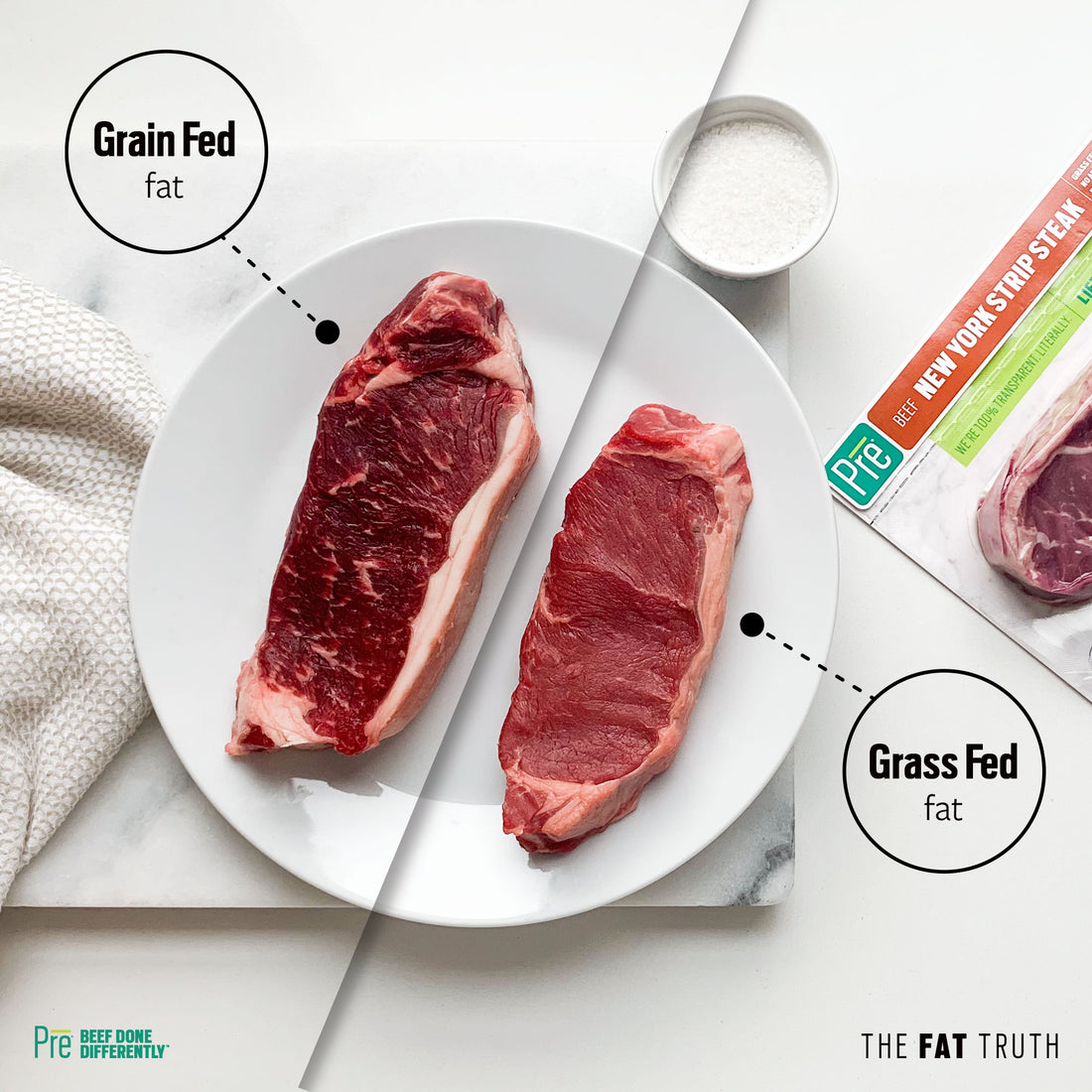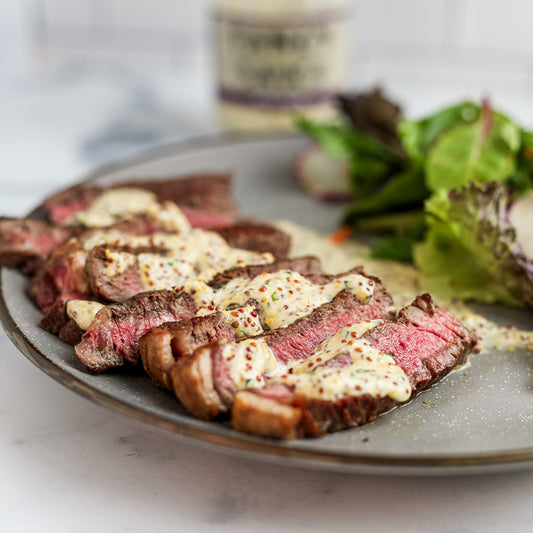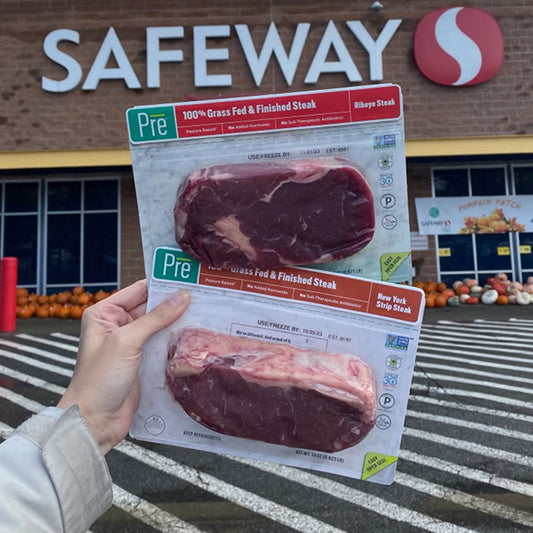
The Truth About Steak Fat
Pre Brands
Have you ever looked at the marbling in beef and wondered why it looks so different from steak to steak?
The truth is, marbling, which is the intramuscular fat in beef, can vary drastically from animal to animal depending on their overall health and diet during their lifetime. Grain-fed and grass-fed fat are different.
Take a look at the different kinds of beef there are in your grocery store. Have you noticed the color and shape differences in conventional beef from the butcher that is typically sourced from grain-fed cows and in contrast, the way grass-fed beef looks?
Grass-fed cattle and grain-fed cattle have a very different look when you see them side by side. You might assume one was healthier than the other, or even that one just looks healthier, but there are a surprising amount of misconceptions about the way we perceive quality in beef. One of them is the way we think about the color of fat on our steaks. We took a deeper look at this, specifically, why the fat on grain-fed vs. grass-fed looks so different.
The Main Differences
There are a few main differences. One of the most obvious ones is the color of the fat. Grain-fed cattle will have a very bright white-colored fat, whereas grass-fed cattle will be off white, almost a yellowish-white. This can be a fun way to test your knowledge about beef just by looking at a cut!
The reason for this color change is the pigment, Beta-carotene. It is found in grass, therefore, cattle with a diet high in nutrient-dense grasses will have a less white fat color. Beta Carotene also gives cattle an abundant source of vitamin A. If they are eating the grass year-round, they will be getting their vitamins easily with every meal.
Cattle that are grass-fed or grass-fed and finished but are not pasture-raised year-round, may need to be supplemented Vitamin A in the winter months. In areas where the climate does not allow for year-round pasture raising, cattle are fed grain or dried grasses in the winter.
In addition, having a grass-only diet means that the fat in those cattle will break down easier when you are cooking. This means a more tender and buttery bite. If the cattle were fed grain or supplemented with grain feed, the fat in the steak tends to be harder and won't be as easy to chew.
Here’s The Fat (color) Truth breakdown:
Grass-Fed Fat:
-
Yellow-white in color
-
The yellow color comes from Beta-carotene which is found in grass.
-
Beta-Carotene is a great source of Vitamin A.
-
If the cattle are pasture-raised year-round, they have plenty of Vitamin A.
-
Fat is softer and will melt or break down more when cooked so you get an easier bite.
Grain-Fed Fat:
-
White in color.
-
Minimal Beta-Carotene.
-
Animals often need to have supplements of Vitamin A.
-
Fat is much harder or tougher and will not break down as much when cooking.
Pre beef is always 100% Grass-Fed and Finished because we source from climates that support year-round grazing on grass. That's why our fat color in our beef is not bright white like grain-fed beef.
Next time you are shopping for beef, take a closer look at the fat and let it tell you an even deeper story to the life the animal lived. Fat color does not lie. But now you can take your Fat Truth knowledge and make the best purchasing decisions for your goals and your diet.



